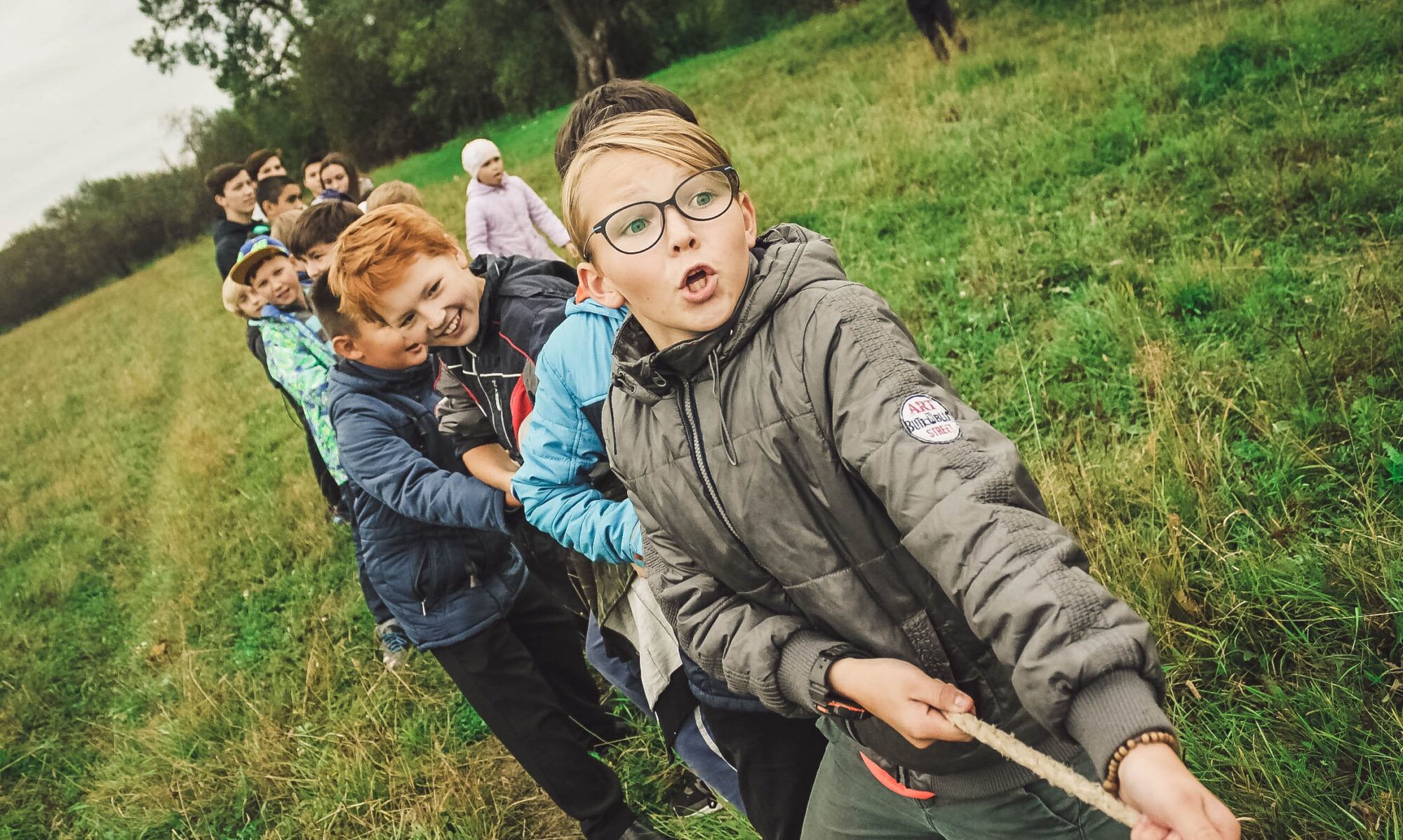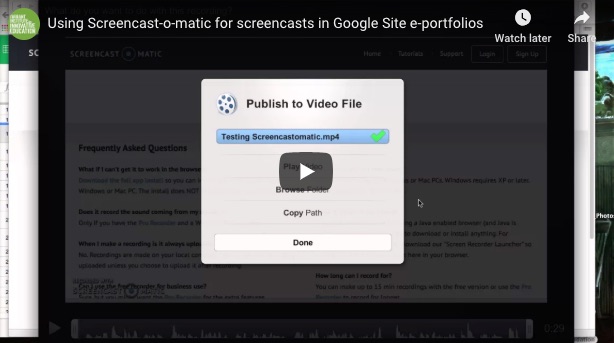Structures & examples for student filmmakers
 Many students love working with video. Students can create videos for any subject to show specifically what they’re learning, how they spend their time and to demonstrate proficiency. But it’s not always obvious how you, as an educator, can help students see the connection to specific content areas.
Many students love working with video. Students can create videos for any subject to show specifically what they’re learning, how they spend their time and to demonstrate proficiency. But it’s not always obvious how you, as an educator, can help students see the connection to specific content areas.
Let’s take a look at some examples and think through how to scaffold students in sharing their work.
Here are 3 types of videos that work well in showcasing content areas:
- How-To Videos
- Interviews
- Newscasts
How-To Videos
How-To videos are a good way to showcase research or demonstrate proficiency with a new skill. After all, the best way to demonstrate mastery of a skill is by teaching others. How about:
- solving math or chemistry equations
- parallel parking
- how to safely use a bunsen burner
- computer skills
- construction, STEM, or engineering projects
- sustainability projects, such as caring for chickens or building a pond
- writing a poem
6th grade student Alice created this video to demonstrate how to solve equations:

Need to do some skill-sharing around computer skills? Assign one student or group of students to produce a video to share with the rest of the class, team or school.

Interview Videos
Interview-style videos give students a great way to analyze facts and opinions around a specific content area. Formats for these can include setting up a mock debate (“Does the Earth really orbit the sun? We’ve assembled this panel of science supporters and naysayers…”) or pursuing more in-depth learning around a topic by actually setting up an interview with a content expert (“I’m here with companion animal veterinarian Thi Lam to find out what the best kinds of foods are for your pet rabbit, and why.”)
Preparing for the video — either by setting up the debate or by locating an expert and formulating appropriate questions — provides just as much of a rich learning opportunity as do the filming and editing portions.
These 4th and 5th graders held a mock-debate on whether zoos should be banned:

Newscasts
Super popular with students! Who hasn’t wanted to don a big shellacked beehive and boxy blazer and get behind the news-reading desk? Making video newscasts are a great way for students to try out the mantle of video journalism, and assembling content-based scripts and realia help make those newscasts powerful.
Two students at Edmunds Middle School, in Burlington VT, showcased their learning around the local watershed by producing the newscast below:

Specific Content Areas
Now let’s do a deep dive into what these three types of videos can look like for specific content areas.
Math:
- How-To videos are perfect for math. Make them for your class website. Or for younger grades. Or for parents (who often have no idea how math is “done these days.”). Here is a simple video of a student doing a math problem.
- Create a persuasive video about growth mindset in math. These from Youcubed are great models. This could be done at the beginning of the year to set the stage for a growth mindset, proficiency based math class.
- Interview community members about how they use math in their daily lives. This could be a compelling upper elementary video– motivating kids to see the importance and relevance of math.
Science:
- All experiments are perfect for video. Videos could be of all groups doing a certain experiment, or of an individual’s perspective. They could be storytelling focused, or How-To focused. Students at St. Francis Xavier school in Winooski VT, made time-lapse videos to demonstrate how mitosis works:

- Environmental themes work well for video. Students could explore a local, national, or world environmental issue in a PSA type video. Check out this student’s fact-driven PSA about World Hunger:

- Students could interview scientists to connect science to their communities and lives.
- Field trips, project based learning, and other hands on work is perfect for documenting in student made videos. Tell the story of the event!
Literacy
- So many ideas here! Book trailers, reader’s theatre, book talks and interviews, readings, book discussions.. for a start. What would you add?
Students at The Edge Academy at Essex Middle School made book trailers with a twist: as facilitator Lindsey Slan Halman explained, the students had been forbidden to use any images off the internet, and thus got extra creative with their staging, imagery, props and acting.

Give students the option of reviewing books either through written work or with a video:

Bonus challenge: Have students create video quizzes based on the content of classroom books. YouTube allows links to be embedded in videos, or you can use Aurasma to add movement to the quiz.
World Languages
- Perfect for How-To videos– how to ask where is the bathroom? Take a look at this video for a creative way students can teach each other language essentials.
- Culture. Students can create narrated slideshows about areas of the world.
Social Studies/Civics
- Bring history to LIFE. Reenactment videos, project videos, role plays.
- Students at Mill River Union High School created newscasts to document the path of a hurricane, and the community response to devastation left in its wake.
- Tell the stories of your town. Find historical landmarks and local people and tell stories of the town’s history through project based learning and video.
- Students at The Cabot School in Cabot VT researched different areas of the country, scripted videos using paper dolls to represent geographical interests, and embedded the whole thing in this massive map of the United States using Thinglink:
How do you support your students making videos showcasing their learning?
Please add your own ideas in the comments!



